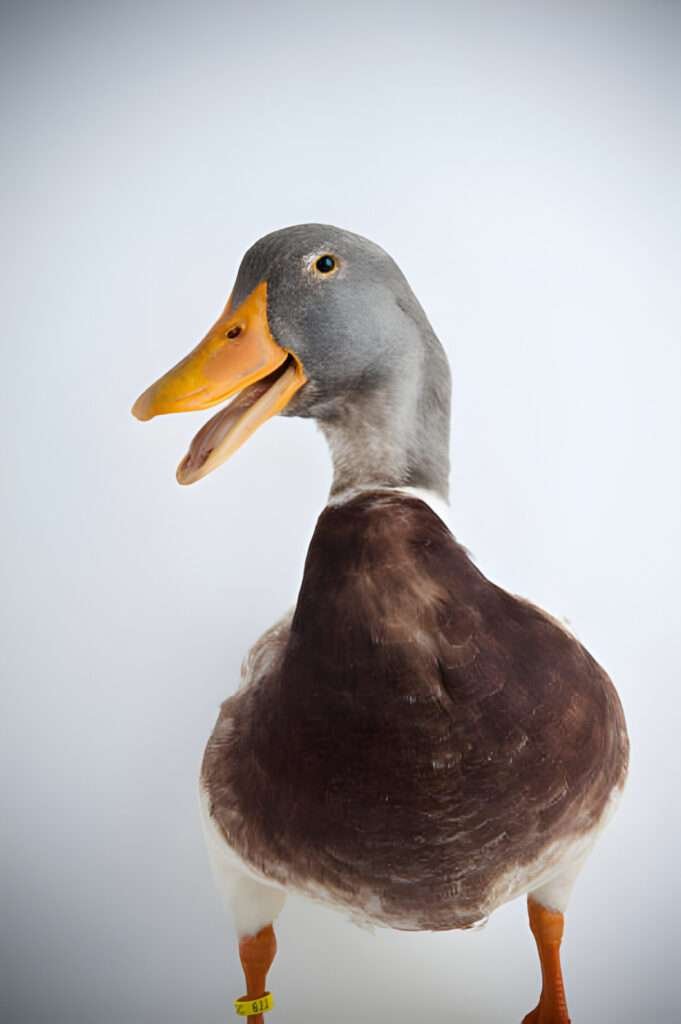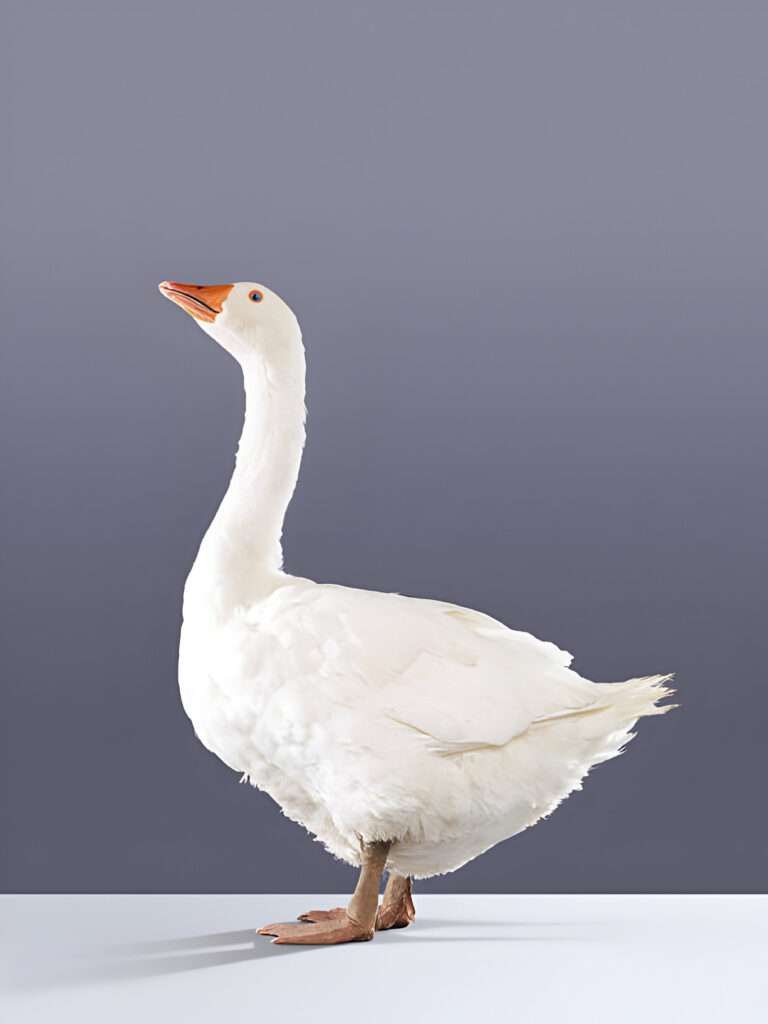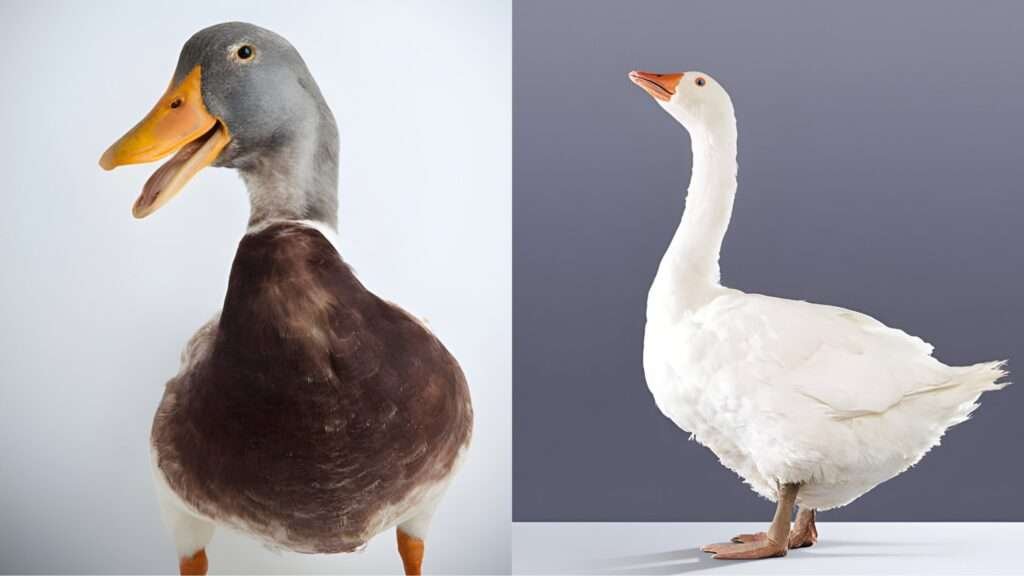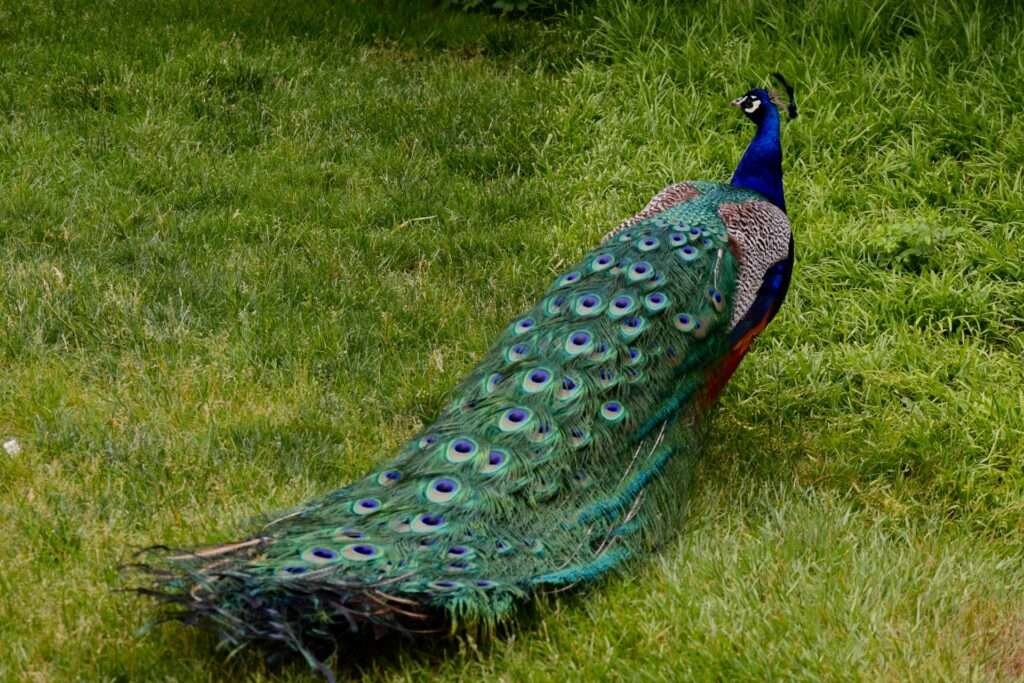Geese are larger than ducks and often migrate, whereas ducks are smaller and more varied in habitat. Ducks tend to have broader bills compared to geese.
Understanding the differences between geese and ducks is essential for bird enthusiasts, farmers, and wildlife observers. Geese, belonging to the family Anatidae, are generally migratory birds known for their V-shaped flying patterns and honking sounds. Ducks, also in the Anatidae family, are more diverse in species and can be found in fresh and saltwater environments.
Their distinctive quacking recognizes them and often exhibits colorful plumage, especially in males. The physical characteristics, behaviors, and habitats of these waterfowl are points of interest for those involved in ornithology, hunting, and conservation efforts. This comparison provides insight into their unique lifestyles and ecological roles, aiding in identifying and appreciating these birds in their natural settings.
Introduction To Goose And Duck
Geese and ducks are popular birds, often seen in parks and lakes. They belong to the same family but differ in several ways. This blog explores their unique characteristics.
Key Characteristics Of Geese
- Size: Geese are generally larger than ducks.
- Neck: They have long necks.
- Social Behavior: Geese are very protective and often mate for life.
- Migratory Patterns: Many geese migrate in a distinctive “V” formation.
- Sound: Their call is loud, like a honk.
Key Characteristics Of Ducks
- Size: Ducks are smaller than geese.
- Neck: They have shorter necks.
- Diet: Ducks often eat various foods, including plants and small fish.
- Migratory Patterns: Some duck species migrate, others do not.
- Sound: Ducks quack, a sound different from a goose’s honk.
Both birds share water habitats but have different behaviors and physical features. Understanding these differences helps in identifying and appreciating each species.
Physical Differences
Geese and ducks are fascinating birds with distinct features. They belong to the Anatidae family, yet they show clear physical differences. Let’s explore the specifics of their size, shape, and feather characteristics.
Size And Shape Variations
Understanding size and shape is key to telling geese and ducks apart. Geese are generally larger than ducks. They have longer necks and larger bodies. Ducks are more compact with shorter necks. Here’s a quick comparison:
| Bird Type | Body Length | Neck Length |
|---|---|---|
| Geese | 30 to 43 inches | Long |
| Ducks | 20 to 25 inches | Short |
Geese often have a more pronounced forehead and a steeper bill angle.
Feather Color And Patterns
The feathers of geese and ducks can be quite different. Geese feathers are often white, grey, or brown. Their patterns are usually uniform. Ducks, on the other hand, can be a rainbow of colors. Male ducks, called drakes, are especially colorful. They have intricate patterns for attracting mates. Female ducks have subtler colors to blend into their surroundings. Look for these feather traits:
- Geese: Uniform colors, less variation
- Ducks: Bright colors in drakes, camouflage in females
Color patterns in ducks are species-specific, with some having distinctive markings. For instance, the male Mallard duck has a signature green head.
Habitat Preferences
Discovering where geese and ducks call home reveals much about these waterfowl. Each species has distinct habitat preferences, catering to their unique needs. This section dives into the environments geese and ducks prefer, painting a picture of their ideal ecosystems.
Preferred Environments For Geese
Geese thrive in areas where water and land intersect. Open fields near water bodies are perfect for these birds. They need spacious areas for grazing and nesting. Geese are often seen in:
- Wetlands – Marshes and swamps provide food and protection.
- Grasslands – Ideal for feeding on plants and grains.
- Lakes and Ponds – Freshwater sources are crucial for their survival.
- Arctic Tundra – Some species migrate here during the breeding season.
Ducks’ Favorite Habitats
Ducks are adaptable, but they have preferences too. They look for sheltered bodies of water. These environments provide safety and food. Ducks are commonly found in:
- Rivers and Streams – Flowing water offers diverse diets.
- Wooded Swamps – Trees offer protection and nesting spots.
- Estuaries – Brackish water supports a rich food web.
- Coastal Shorelines – Ducks enjoy the varied marine cuisine.
Behavioral Traits
Geese and ducks share the sky, the waters, and sometimes our parks, but their behaviors set them apart. Understanding these feathered friends can be both fascinating and enlightening. Let’s dive into the unique social habits of geese and the intriguing behaviors ducks exhibit in the wild.
Social Behavior Of Geese
Geese are known for their strong social bonds and loyalty to their flock. They often mate for life and are highly protective of their partners and offspring. Seeing geese flying in a “V” formation is a testament to their teamwork and efficiency.
- Mate for life, rarely separating from partners
- Defend their young and territory vigorously
- Communicate with a variety of honks and calls
- Fly in formations to conserve energy and communicate

Duck Behavior In The Wild
Ducks exhibit a more laid-back lifestyle compared to geese. While they are social creatures, their bonds are less intense. Ducks are adaptable foragers, dabbling for food in the water or scavenging on land.
| Behavior | Description |
|---|---|
| Foraging | Search for food in both water and on land |
| Social Structure | Form loose groups but less permanent bonds |
| Mating | Seasonal, with males often showing vibrant plumage |
| Communication | Use quacks and other sounds to signal |
“Duck Grouping: Unraveling the Mystery Behind Collective Nomenclature”
Diet And Feeding Habits
Geese and ducks share wet environments but have distinct diets. Understanding what these birds eat helps in their conservation and backyard care. Their feeding habits reflect adaptation to their surroundings. Let’s dive into the specifics of their diets.
What Geese Eat
Geese are mainly herbivores and graze like cattle. Their diet consists of:
- Grass – the main staple in a goose’s diet.
- Seeds – they enjoy a variety of seeds from different plants.
- Grains – wheat, and corn are occasional treats.
- Aquatic plants – they feed on roots and shoots in water bodies.
Geese often feed in flocks and can cover large areas to find food.
Common Foods For Ducks
Ducks are omnivorous and have a more varied diet. They eat:
| Food Type | Examples |
|---|---|
| Plants | Algae, lily pads, and aquatic plants |
| Insects | Beetles, mosquitoes, and larvae |
| Small Fish | Minnows and fish eggs |
| Crustaceans | Snails and shrimp |
Ducks often dabble on the water’s surface or upend for food underwater.
Reproductive Processes
Reproductive Processes in birds can be as diverse and fascinating as the species themselves. While similar in many ways, geese and ducks have distinct reproduction approaches. Understanding their unique mating rituals and reproductive strategies provides insight into the fascinating world of avian biology. Let’s take a closer look at how these waterfowl propagate their species.
Mating Rituals Of Geese
Geese are known for their lifelong pair bonds. A goose will choose a mate and stay with them year after year. This loyalty is a cornerstone of their reproductive success. The mating rituals of geese are elaborate and can include synchronized honking, head dipping, and mutual preening. These behaviors strengthen their bond and ensure cooperation during the breeding season.
- Head Bobbing: A sign of affection and recognition between mates.
- Mutual Preening: Helps maintain plumage and reinforces the pair’s bond.
- Synchronized Calls: A duet that signals a united front against predators.
How Ducks Reproduce
Ducks, on the other hand, often have more flexible mating systems. Many duck species are seasonally monogamous, forming pairs only for a single breeding season. Duck courtship is a dynamic display, with drakes showing off their vibrant plumage and performing intricate dances to attract females.
| Stage | Description |
|---|---|
| Displaying | Drakes flaunt their feathers and perform to catch the female’s attention. |
| Mating | Once a female chooses a mate, they undergo a brief but critical mating process. |
| Nesting | Females build nests, lay eggs, and incubate them until they hatch. |
Both geese and ducks invest considerable effort into ensuring the survival of their offspring. From the initial courtship to the hatching of eggs, these waterfowl exhibit complex and intriguing behaviors.
Adaptations For Survival
When we peer into the lives of geese and ducks, we find fascinating strategies they use to survive. Both birds have evolved unique characteristics to thrive in their environments. Let’s explore these survival adaptations.

Geese Adaptations
Geese have remarkable adaptations that help them survive in the wild. Their survival traits include:
- Migration instincts: Geese fly in V-formations to conserve energy during long journeys.
- Strong family ties: They form lifelong pair bonds and protect their young.
- Feeding habits: Their diet consists of grass, seeds, and grains, which are abundant in their habitats.
- Protective behavior: Geese are known for their aggressive behavior when threatened, deterring predators.
- Adaptable nesting: They can nest on the ground or in elevated areas, avoiding predators.
Do geese have teeth?
Survival Skills Of Ducks
Ducks are equipped with their own set of survival skills:
| Skill | Description |
|---|---|
| Waterproof feathers | Special oils keep their feathers dry and buoyant in water. |
| Diverse diet | They eat plants, fish, and insects, allowing them to adapt to different food sources. |
| Webbed feet | Perfect for swimming and navigating in water. |
| Camouflage | Ducks have color patterns that help them blend in with their surroundings. |
| Brood parasitism | Some ducks lay eggs in other ducks’ nests, increasing the chances of their offspring’s survival. |
These birds showcase incredible adaptations that enable them to overcome ecosystem challenges. By understanding their survival skills, we gain insight into nature’s resilience.
Human Interaction And Impact
People have lived with ducks and geese for a long time. We keep them on farms. We also try to protect them. But sometimes we make life hard for these birds.
Domestication And Farming
Long ago, people tamed wild ducks and geese. We wanted their eggs and meat. We also liked their feathers.
On farms, we raise many ducks and geese. They live in big barns or outside. Some breeds are very popular. These are the ones we see most on farms:
- Pekin Ducks: White and big. They grow fast.
- Muscovy Ducks: They have red faces. They don’t quack much.
- Embden Geese: Tall and white. They are good for meat.
- Chinese Geese: They have long necks. They make a lot of noise.
People care for these birds, giving them food and water and keeping them safe. This keeps the birds healthy and growing.
Conservation Efforts And Challenges
Wild ducks and geese need our help. Their homes are in danger. We cut down trees and build houses. This makes it hard for them to find food and a place to live.
Conservationists work to save these birds. They make new homes for them. This includes wetlands and parks. They also tell people why these birds are important.
But saving ducks and geese is not easy. They face many problems:
| Problem | Impact on Birds |
|---|---|
| Pollution | It makes them sick. |
| Climate Change | Changes where they can live. |
| Hunting | Can hurt their numbers. |
Groups like WWF and Audubon work hard. They protect these birds. They fight against these problems. They want ducks and geese to live long and healthy lives.
Frequently Asked Questions
What Is The Difference Between A Duck And Goose?
Ducks are generally smaller than geese and have shorter necks. Geese have longer migratory patterns and often form large, noisy flocks. Ducks have a wider variety of plumage, while geese typically display a more uniform coloration. Ducks also exhibit more varied feeding behaviors compared to geese.
Does Goose Meat Taste Like Duck?
Goose meat is generally richer and darker than duck, with a more pronounced flavor. Both have a similar texture, but the goose is typically fattier. Their tastes are not identical, but they share some similarities.
Are Ducks Related To Geese?
Yes, ducks are related to geese. Both belong to the Anatidae family, which also includes swans. This family groups together waterfowl that share common characteristics and evolutionary origins. Ducks and geese differ mainly in size and behavior.
Is Goose Related To Duck?
Yes, geese are related to ducks. Both belong to the bird family Anatidae, which also includes swans.
Conclusion
Understanding the differences between geese and ducks enriches our knowledge of avian life. Both birds offer unique characteristics and behaviors that fascinate enthusiasts and casual observers. Whether you’re drawn to the graceful goose or the delightful duck, each holds a special place in our ecosystems and hearts.




